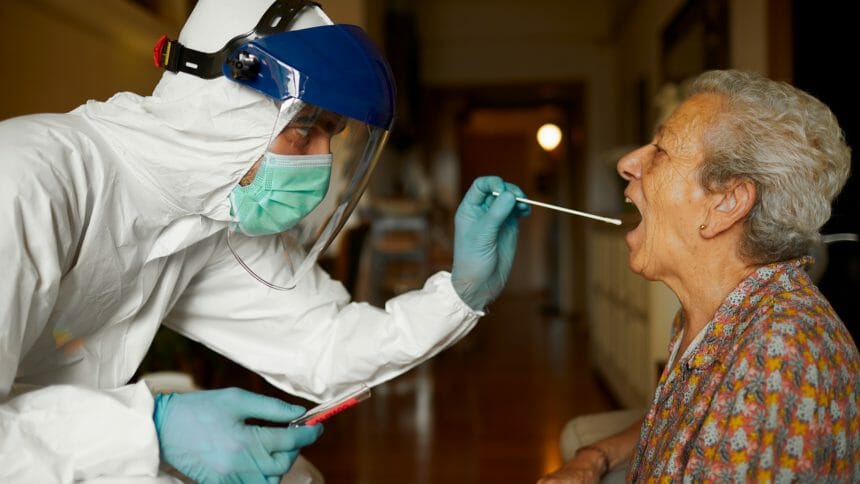A research study recommending weekly testing of staff and residents in skilled nursing facilities is applicable to assisted living communities looking to mitigate the spread of COVID-19, according to the lead author.
The research letter, “Evaluation of testing frequency and sampling for SARS-CoV-2 surveillance strategies in long-term care facilities,” was published this month by the Journal of the American Medical Directors Association and sought to identify optimal testing strategies for SARS-CoV-2 in long-term care facilities.
Researchers compared the effect of various coronavirus surveillance strategies and concluded that weekly testing of at least 50% of staff members and residents was necessary to minimize outbreaks.
“We believe that our recommendations could apply to assisted living settings,” study author Charlotte Laniece Delaunay, a Ph.D. candidate in the McGill University’s Department of Medicine in Montreal, told McKnight’s Senior Living. “The optimal testing strategy would vary based on the R0, and some R0 values that we studied (2 and 3) are plausible for assisted living settings.”
R0 represents the average number of people infected by one infectious individual and is considered an “early warning system” for the possibility of an epidemic or pandemic. If R0 is greater than 1, then the number of infected people likely will increase exponentially.
The investigators looked at seven different testing models, ranging from testing 100% of individuals every 14 days to testing everyone twice a week. Testing strategies were evaluated by the number of days to first diagnosis, the cumulative number of infected cases at the time of first diagnosis, and the number of tests used.
Researchers recommend testing at least 50% of people weekly if the probability of infection is low (an R0 value of less than 2) and 100% of people when the probability of transmission is higher (an R0 level of 3), such as in assisted living communities. Testing 100% of the population twice a week may be beneficial when the risk is very high (R0 level of 5), such as in nursing homes and skilled nursing facilities.
The study stated that as modifiable factors — such as hand washing, mask-wearing and physical distancing — are more difficult to institute, “more frequent testing may guard against widespread transmission and allow less stringent confinement measures.”
The authors concluded that with low transmission rates, weekly testing of 50% of residents and staff should be implemented as a minimal surveillance strategy to prevent widespread outbreaks.



